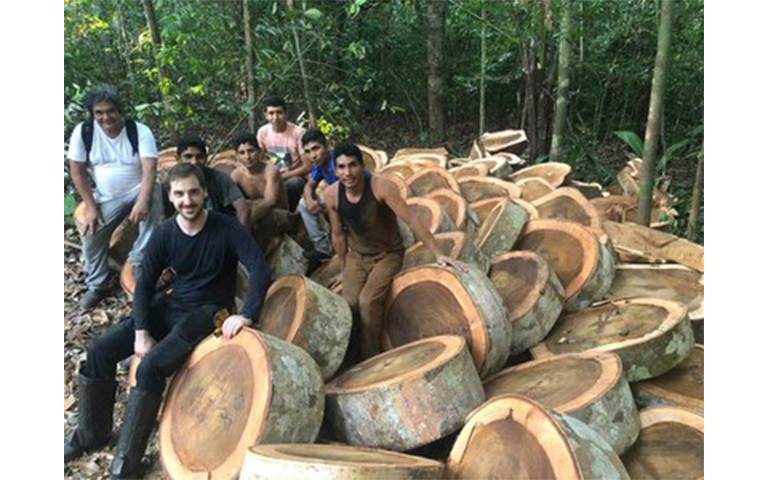Revising forest biomass estimates within super-sized Amazon trees
29 April 2021
Combining remotely sensed with directly harvested data

Estimating forest biomass is critical for understanding the global carbon cycle and its response to changing climate. Models used to estimate such biomass typically assume that trees store most of their mass in their trunks. If trunk volume is therefore estimated - from the ground using tape measures or from above via aircraft or satellites - and we know the density of the wood, then the tree mass can be calculated.
A pioneering study by UCL Geography's Dr Andy Burt, Professor Mat Disney, Dr Phil Wilkes and Dr Matheus Boni Vicari, with colleagues from Brazil, Australia and the UK, combined lidar (laser) and destructive harvest measurements of such trees in Caxuianã, NE Brazil. One aim was to test lidar estimates of the biomass of the trees, representing the carbon they take up over their lifetime. Another aim was to measure how mass is distributed within the trees between the trunk and crown, and how this varies.
It was found that large Amazon trees have much bigger crowns and more variable mass than previously thought. As Mat Disney comments:
It was quite a surprise to find that up to 60% of the tree biomass could be in the crown. This may mean re-thinking some of our models and could also have implications for new satellite estimates of biomass.
The work involved a team of about 10 to clear, fell and then weigh 4 large trees. The felling was organised by Prof. Lola da Costa and his team from the Instituto de Geosciências, Universidade Federal do Pará, Belém, Brazil. Before being felled, the trees were scanned with the lidar by Andy Burt to produce 3D estimates of their volume. Afterwards, they were cut into manageable sections (as the picture indicates, no mean feat!) and weighed using crane scales hung on ropes between trees. Sections were then dried, to remove the water, and re-weighed to obtain the dry density of the wood.
As part of the work, Phil Wilkes has used the lidar data to produce 3D visualisations of the harvested trees - well worth a look.
Felling being carried out at the Caxuianã field site.
For the paper, see
Andrew Burt, Matheus Boni Vicari, Antonio C. L. da Costa, Ingrid Coughlin, Patrick Meir, Lucy Rowland and Mathias Disney: New insights into large tropical tree mass and structure from direct harvest and terrestrial lidar, Royal Society Open Science, Published:10 February 2021
 Close
Close

